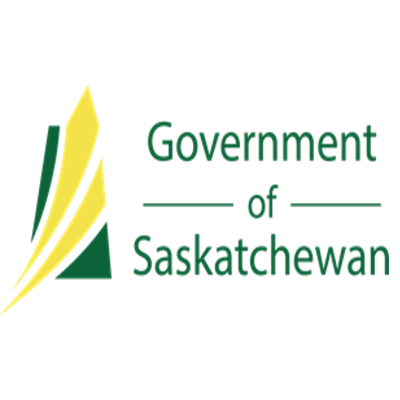polygon
Type of resources
Topics
Keywords
Contact for the resource
Provided by
Formats
Representation types
Update frequencies
status
-

PCS Regions contains the boundaries of park regions for the administration and management purposes of provincial parks, recreation sites, protected areas, and historic sites by the Saskatchewan Ministry of Parks, Culture and Sports - Parks Division. PCS Regions contains the topologically corrected boundaries of park regions. These were determined based on the location and number of provincial parks, recreation sites, protected areas, and historic sites and drawn using imagery for administration and management purposes by the Saskatchewan Ministry of Parks, Culture and Sports - Parks Division. These boundaries outline the area for which a Regional Director is responsible, jointly with a number of Park Managers. This dataset is current as of Apr 27, 2023.Updates: Corrected topology errors to remove gaps and overlaps within itself and against the ADMINISTRATIVE.provincial_boundary feature class (ED220908). Added AREA_HA and CONTACT fields (ED220908). Renamed the feature class from PARK_REGIONS to PCS_Regions_v2 for clarity (ED230427).
-

The Saskatchewan Parks Boundaries dataset includes Provincial Parks (PP), Recreation Sites (RS), and Historic Sites (HS) as described in the The Parks Act, The Recreation Sites Regulations, 1991, and The Historic Sites Regulations, respectively. The Saskatchewan Parks Boundaries dataset is a version managed by the Saskatchewan Ministry of Parks, Culture and Sport that more closely matches the intent of the descriptions in The Parks Act, The Recreation Sites Regulations, 1991, and The Historic Sites Regulations than the dataset provided by Information Services Corporation (ISC). The last update was completed on Sept 22, 2021, to reflect changes as per the latest Recreation Sites Regulations amendment. The park types listed in the dataset include: 1) Provincial Parks, i.e., Natural Environment Parks (NE), Recreation Parks (RP), Wilderness Parks (WP), and Historic Parks (HP); 2) Recreation Sites (RS); 3) Protected Area (PR); and 4) HS Historic Sites (HS). Please visit https://geohub.saskatchewan.ca for more information or to download this data.
-

PCS Regional Parks contains the approved boundary of regional parks in Saskatchewan under The Regional Parks Act, 2013. These boundaries are maintained by the Government of Saskatchewan on behalf of the regional park authorities. PCS Regional Parks contains the approved boundary of all regional parks in Saskatchewan. These boundaries, maintained by the Government of Saskatchewan on behalf of the regional park authorities, reflect the descriptions in the originating Order in Council (OC) or amending Minister's Order (MO) signed under the Regional Parks Act, 2013. This feature class is the revised version of "Parks_Regional" following a significant schema update completed in March 2023. Updates: Corrected topology errors to remove gaps and overlaps within itself and against the CADASTRE.surface feature class (ED220908). Corrected attributes and updated schema (ED230331). Renamed the feature class from PARK_REGIONS to PCS_Regions for clarity (ED230427).
-

Location of centre points of Yukon aerial photographs. Data was produced from heads up digitization of paper flightline index maps Distributed from [GeoYukon](https://yukon.ca/geoyukon) by the [Government of Yukon](https://yukon.ca/maps) . Discover more digital map data and interactive maps from Yukon's digital map data collection. For more information: [geomatics.help@yukon.ca](mailto:geomatics.help@yukon.ca)
-

The Yukon Geological Survey (YGS) has compiled over 195 surficial geology maps into a standardized GIS format, providing approximately 80% coverage of the territory. The maps range in scales from 1:250,000 to 1:10,000 with spatial overlap between scales. The original maps were produced by various agencies, including the Geological Survey of Canada, YGS, Yukon Government, universities, and the City of Whitehorse. All original feature descriptions have been preserved and also converted to standardized values using the Yukon terrain classification system. The compilation includes 4 GIS datasets and supporting documents available for download via [YGS integrated data system](https://data.geology.gov.yk.ca/Compilation/33) (YGSIDS) or GeoYukon. A .lyr file is [provided](https://data.geology.gov.yk.ca/Compilation/33) to symbolize feature classes and differentiate overlapping maps at different scales. Additionally, there is a surficial geology map index. The polygon attributes captured include surficial material, texture, age, surface expression, and geomorphological processes. Line features include geological contacts, glacial limits, glacial landforms (cirques, arêtes, eskers, meltwater channels, moraines), and non-glacial landforms (faults, lineaments, landslides, escarpments). Point features include field station, fossil and sample locations, glacial landforms (erratics, kames, kettles, drumlins, flutings), permafrost features (pingos, palsas, patterned ground, thermokarst depressions), and other non-glacial landforms (landslides, tors). The map index provides information on each map publication such as author, map title, map scale, publisher. These data are valuable for land-use applications in the territory, including: mineral and placer exploration, geotechnical engineering, infrastructure planning, granular resource assessments, permafrost modeling, agricultural assessments, forest management, and biophysical or ecological land classification. Distributed from [GeoYukon](https://yukon.ca/geoyukon) by the [Government of Yukon](https://yukon.ca/maps) . Discover more digital map data and interactive maps from Yukon's digital map data collection. For more information: [geomatics.help@yukon.ca](mailto:geomatics.help@yukon.ca)
-

Fire regions are the largest management unit where wildland fire resources are allocated and deployed. They can be further subdivided into fire districts. Distributed from [GeoYukon](https://yukon.ca/geoyukon) by the [Government of Yukon](https://yukon.ca/maps) . Discover more digital map data and interactive maps from Yukon's digital map data collection. For more information: [geomatics.help@yukon.ca](mailto:geomatics.help@yukon.ca)
-

Fire districts are administrative areas where wildland fire resources are allocated and deployed. They fall within one of six larger fire regions. Distributed from [GeoYukon](https://yukon.ca/geoyukon) by the [Government of Yukon](https://yukon.ca/maps) . Discover more digital map data and interactive maps from Yukon's digital map data collection. For more information: [geomatics.help@yukon.ca](mailto:geomatics.help@yukon.ca)
-

This is a landscape level GIS coverage of large fires within the Yukon, spanning a period from 1946 to present. Original polygon size was limited to 200 hectares, when the first edition of this dataset was completed in 1997. Smaller fires are now being included, especially near communities. It is important to note that in most instances, fire perimeters only were mapped. This means that unburned areas within the perimeter are not accounted for, either in an ecological context or in annual area burned summaries. More recent fires mapped, with the aid of satellite technology may include large unburned patches.Although the temporal scale of the coverage goes back to late 1940's, Yukon-wide fire detection capability was not fully developed until the 1960's. In addition to this, access to regular aerial mapping was not readily available until that same time period. As a result many fires in the 40's and 50's were simply not recorded or poorly mapped, particularly in the north. For that reason, care must be taken when drawing conclusions from these data as it relates to the early years. Distributed from [GeoYukon](https://yukon.ca/geoyukon) by the [Government of Yukon](https://yukon.ca/maps) . Discover more digital map data and interactive maps from Yukon's digital map data collection. For more information: [geomatics.help@yukon.ca](mailto:geomatics.help@yukon.ca)
-

*Yukon Aerial Imagery* is distributed from the Government of Yukon imagery repository. This is a dynamic image service containing aerial photographs and LiDAR imagery for locations in the Yukon, Canada. This data is in Yukon Albers equal area projection. It can be viewed and queried in the GeoYukon application: [https://mapservices.gov.yk.ca/GeoYukon](https://mapservices.gov.yk.ca/GeoYukon). For more information: [geomatics.help@yukon.ca](mailto:geomatics.help@yukon.ca).
-

Forest stands (FSTAND) is a vector delineation of relatively homogeneous forest stands or naturally non-forested areas as polygons with a 0.5 ha minimum area and a 2.0 ha median area. Download: Here The Saskatchewan Ministry of Environment, Forest Service Branch, has developed a forest resource inventory (FRI) which meets a variety of strategic and operational planning information needs for the boreal plains. Such needs include information on the general land cover, terrain, and growing stock (height, diameter, basal area, timber volume and stem density) within the provincial forest and adjacent forest fringe. This inventory provides spatially explicit information as 10 m or 20 m raster grids and as vectors polygons for relatively homogeneous forest stands or naturally non-forested areas with a 0.5 ha minimum area and a 2.0 ha median area. Forest stands (FSTAND) is a vector delineation of relatively homogeneous forest stands or naturally non-forested areas as polygon with a 0.5 ha minimum area and a 2.0 ha median area. For more information, see the Forest Inventory Standard of the Saskatchewan Environmental Code, Forest Inventory Chapter.
 Arctic SDI catalogue
Arctic SDI catalogue